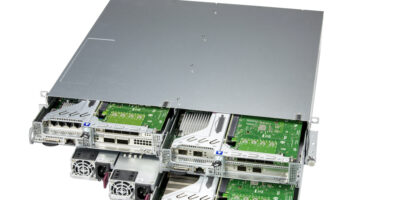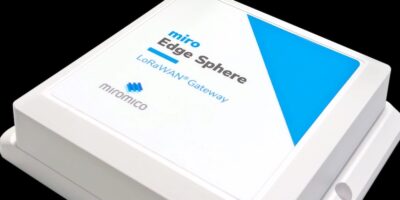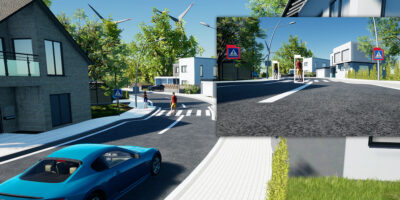Short depth, multi-node servers have been designed and optimised by Supermicro for 5G, IoT, and edge applications. The SuperEdge server is suitable for environments where high-density compute and I/O are required in a small form factor, for example, on-site in retail or branch offices, or field locations such as at the base of cell towers or high traffic areas.
The SuperEdge uses a third generation Intel Xeon Scalable processor in each node to deliver data centre processing power at the edge to accelerate analysis and real-time application functionality. The server increases node density by 50 per cent over previous application-optimised servers for 5G, IoT, and Edge workloads, said Supermicro. Customers can start with a single server and add additional ones as demand increases.
“The SuperEdge server increases the compute and I/O densities for edge applications and enables operators to increase system workloads and data processing performed at the edge, reducing network traffic back to data centres,” said Charles Liang, president, and CEO, Supermicro. “Designing application-tuned servers for both the edge and the cloud optimises the deployment of network computing, as we move to the metaverse,” he added.
The Supermicro SuperEdge server is designed to fit in small data centres or environments where server depth is critical. It has a depth of just 430mm and GPUs (graphics processing units) may also be installed, giving the Supermicro SuperEdge the ability to perform AI calculations at the edge of the network, increasing decision-making capabilities and reducing response times.
The nodes and I/O connections are accessible from the front, allowing quick maintenance when needed. The server will operate across a temperature range of -5 to +55 degrees C and is suitable for a range of humidity and other environmental conditions. It can therefore be installed where there is no climate controlled setting without increasing opex (operating expenditure). Redundant power supplies and cooling fans enable the SuperEdge server to operate in harsh conditions outside of a traditional data centre.
Each of the three hot-swappable nodes can accommodate three PCIe 4.0 slots, which enable a range of add-on cards that accelerate applications designed for edge computing. The server’s I/O density allows for multiple acceleration cards, including networking, FPGA, DPU, eASIC and TimeSync options. Each node can accommodate up to 2Tbyte of DDR4 DRAM. This allows more extensive and more complex applications to be installed and executed than previously available, added the company.







